|
|
Post by rsivertsen on Sept 24, 2007 1:15:44 GMT
Here are some shots of the Aldrovanda in my pond this year, duckweed and all, note the red forms in the first few, (on the left side of the image) that just showed up this year after I tried to introduce them several years ago. I believe that they are probably the Hungarian Red forms, but not 100% sure, as I tried several of the Australian red forms as well. I thought for sure that I lost them all, even the green forms as the pond dried out totally, and several times, and then froze solid, and I didn’t see any signs of any red forms during the last few years, and was afraid that I might even lose the green forms too, but this year, I found a few of these red forms, and they are perhaps the first documented case of having a red form naturalized here in the USA! Also note how shallow the water is where they grow, and the conspicuous presence of clay in the detritus, and the close proximity to large monocot plants such as Juncus and Carex hummocks, and Phragmites strands. They seem to crawl out from the bases of these hummocks and find themselves in the trails that I have created by walking around in this pond, and grow best in these areas that also receive full, direct sunlight all day long, and where the water heats up to warm and tepid temperatures; also, they seem to do well when they find themselves tangled up in the exposed roots of these plants. Note how closely stacked the axils are on some of these strands, giving the strands the appearance of a bushy cluster of traps Also note the conspicuous absence of any algae on any of these Aldrovanda stands! 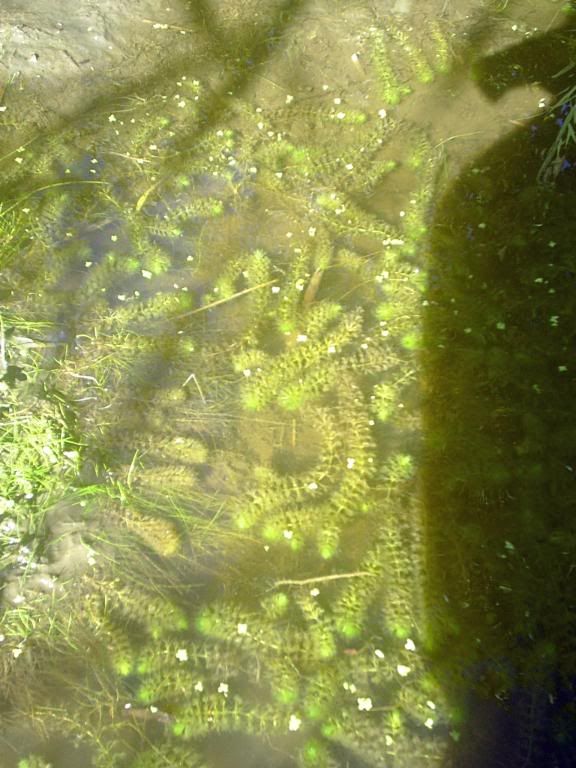 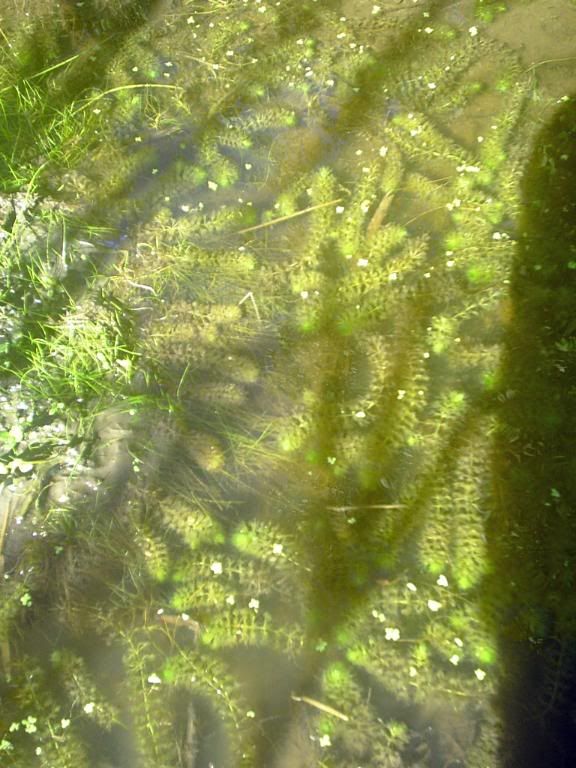  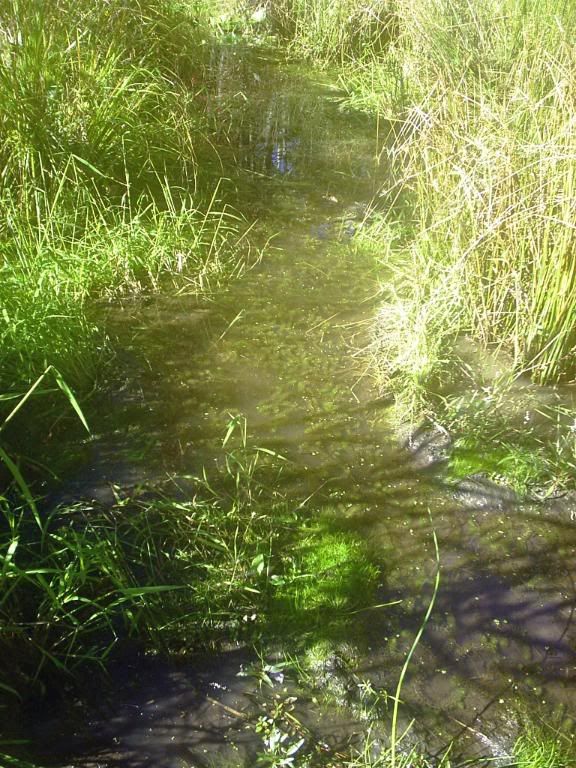 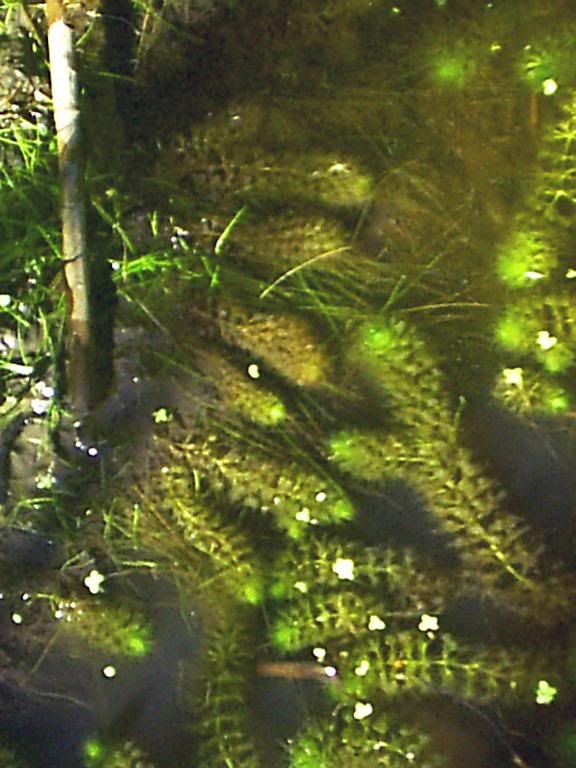  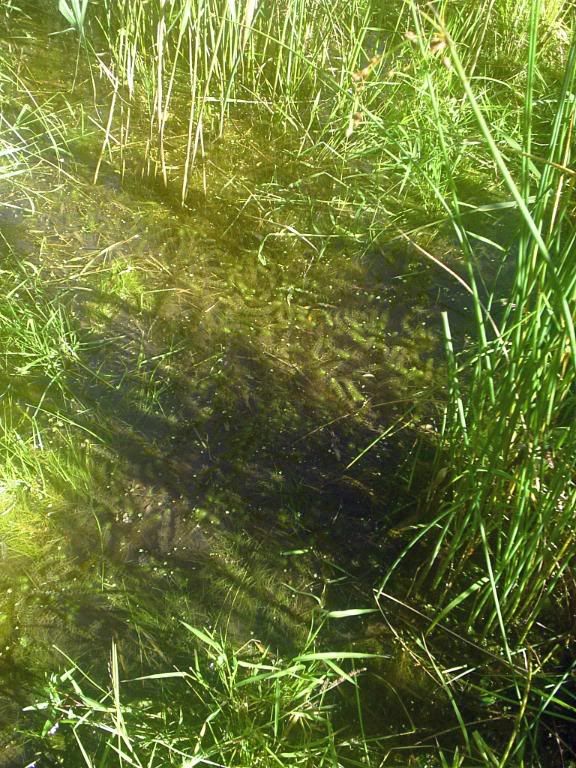 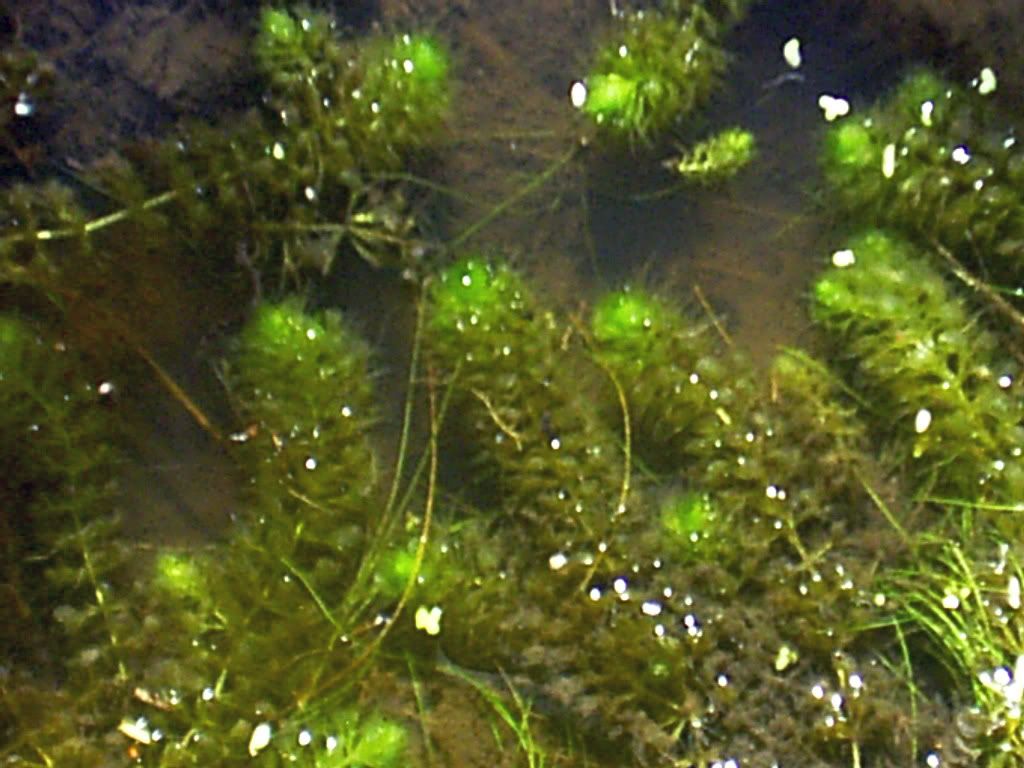  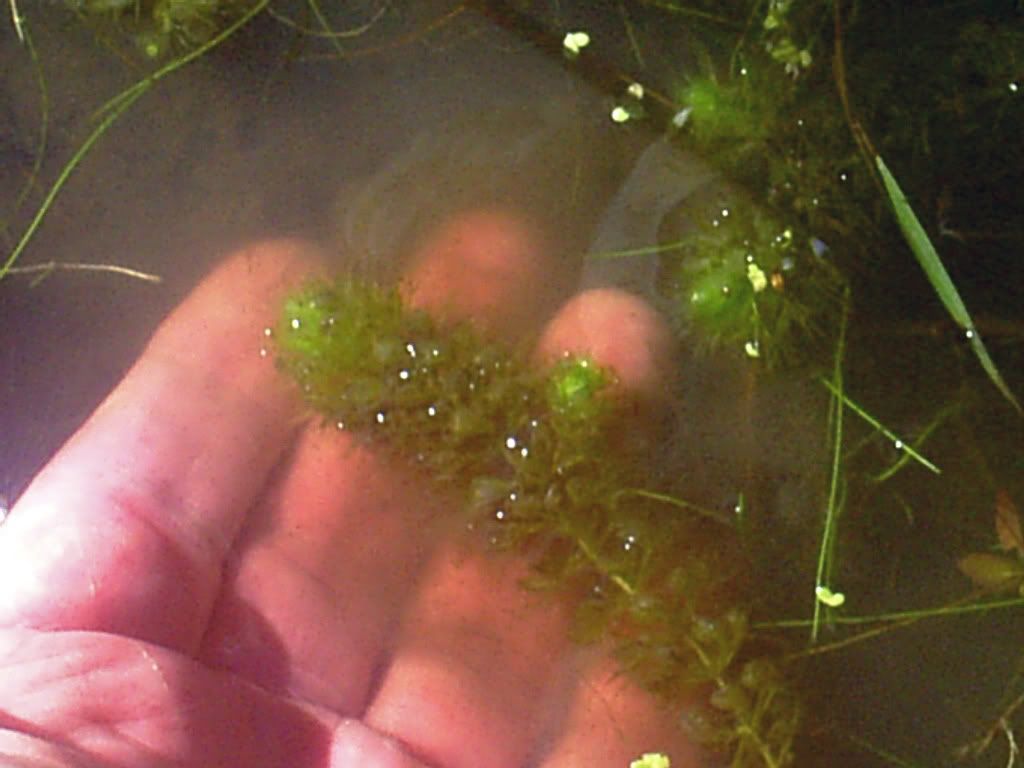 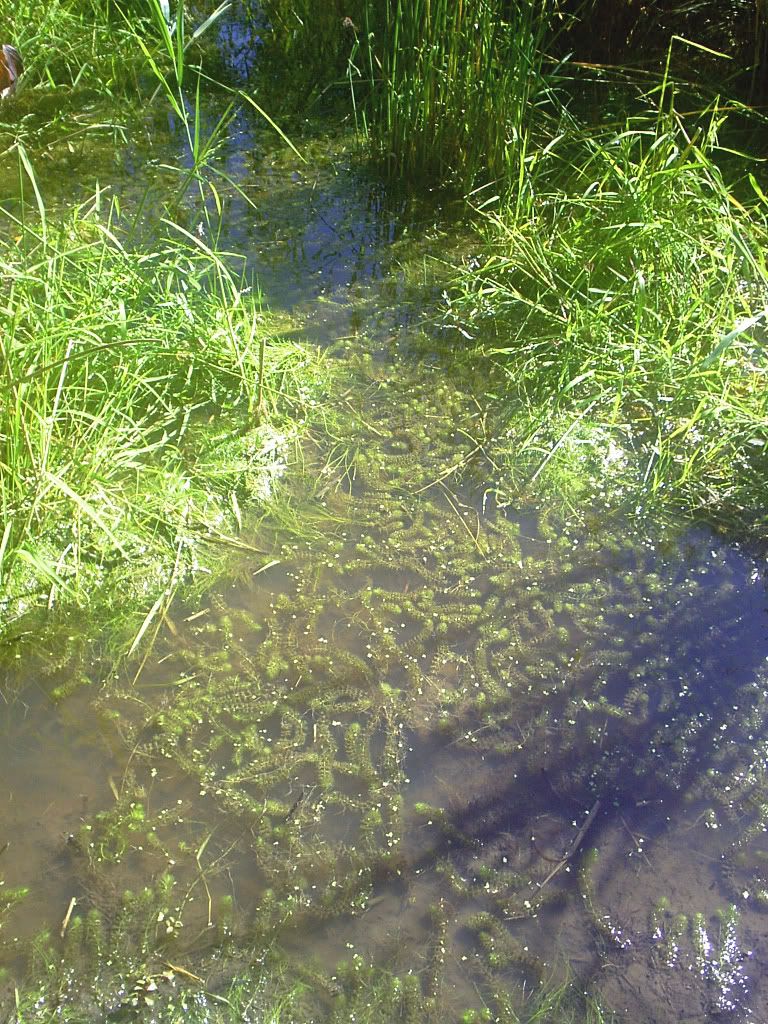 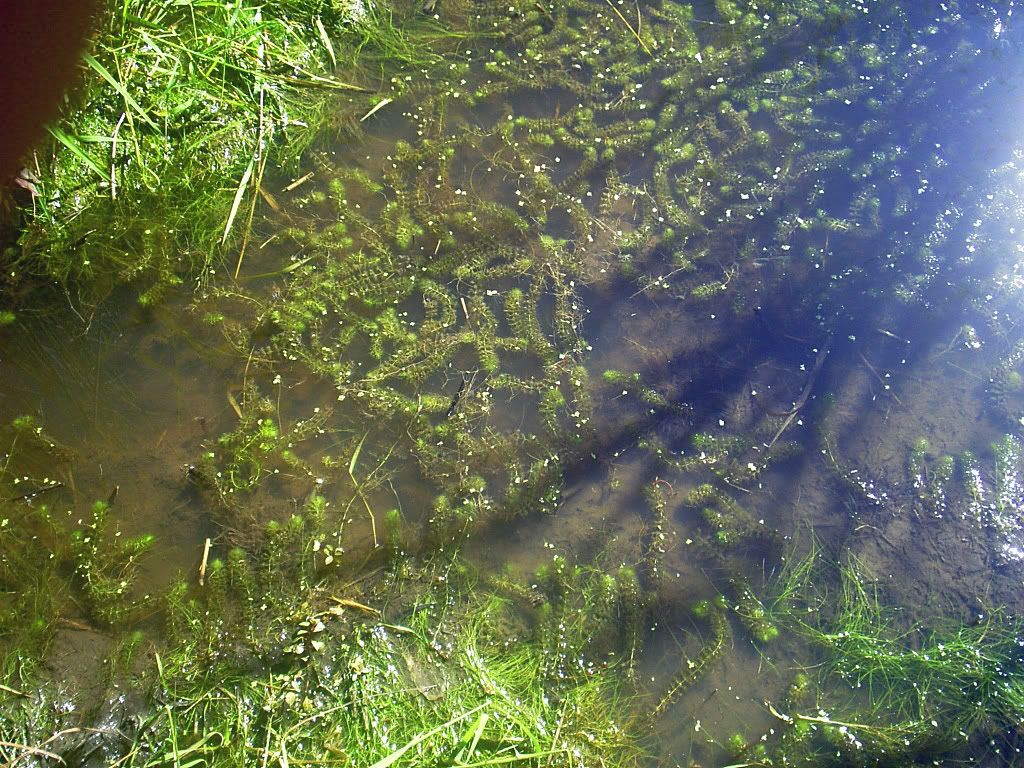 |
|
locko
Full Member
Posts: 148
|
Post by locko on Sept 24, 2007 2:38:08 GMT
Wow they look really great and there is sooooo many nice work. I wish I had that many plants
|
|
Clint
Full Member
Posts: 808
|
Post by Clint on Sept 24, 2007 2:46:19 GMT
Nice! Clearly they like clay!
|
|
|
|
Post by rsivertsen on Sept 24, 2007 3:06:45 GMT
This is the first year, since 2001 that they've survived all the winters and summer droughts, each and every year that I have calculated that their numbers which are now in the millions!! ... and every year, there have been several times when I’ve given them, performed their "Last Rites" rituals, and have just written them off as a lost cause.
Again it's the LAST place I ever expected to see them alive again, algae problems, duckweed, water lilies and all, but they have proven to be the survivors that they are when their conditions are satisfied, which isn't easy! Several other attempts at far more pristine sites have all have failed for some reason or another; the Aldrovanda just failed to thrive and died off, and never returned in the Spring. Now, I realize that they require very shallow water, close proximity to large monocot plants, a presence of clay, and waters that get very warm from direct sunlight.
The Aldrovanda refuses to grow in deeper waters over a foot deep, and will rapidly go into decline and die off if their conditions are not fully realized. They also have an insatiable need to feed, and will quickly fail to thrive if they do not have enough food to eat.
|
|
|
|
Post by Deleted on Sept 24, 2007 3:36:06 GMT
wow lucky i have trouble keeping my 3 1inch plants alive........do you sell your plants?.......
|
|
|
|
Post by zpyder on Sept 24, 2007 7:09:37 GMT
Wow, big pond! Can we get a photo of the whole pond, as it's hard to get an idea of the scale of the thing, it looks nice and natural rather than the overly clean artificial looking ponds you often see!
|
|
|
|
Post by rsivertsen on Sept 24, 2007 11:16:19 GMT
I have posted images of the whole pond in an earlier post, from '04, where you can see the entire pond from various views. Note that the Aldrovanda does not grow out in the deeper areas where the water depth goes from ankle deep to knee deep and even up to my waist, but just a few feet into where the water is only ankle deep, or even just a thin film of water, and within inches from the various Juncus and Carex hummocks of the Phragmites stands, they grow in the thousands. The water chemistry is axactly the same, but the biology of the water is a little different.
The strands that become too shaded under the canopy of Carex form thin etiolated strands, and have no red color, even if they are the red forms.
But in this population, about 10% of the green forms, when grown in full direct sun, grow into these large bushy strands with the axils stacked directly on top of each other. I have the very same strands also naturalized in a different site where the water is a little deeper and more acidic, and they never get this growth form, but grow like the typical green strands, with about a quarter inch space between the axils, and the typical size.
I may sell them next year just because there are so many of them in there now, and they reproduce exponentially, doubling (at least!) their numbers of apical growth points every week, and they will continue to grow like this until November, when they finally stop growing, and form dormant turions.
|
|
|
|
Post by Deleted on Sept 25, 2007 19:51:34 GMT
be sure to contact me if and when yo decide to sell them.....
|
|
Clint
Full Member
Posts: 808
|
Post by Clint on Sept 25, 2007 20:41:36 GMT
Just a friendly reminder to everyone that no public trading/selling is allowed on the forum.
|
|
|
|
Post by Deleted on Sept 26, 2007 15:44:43 GMT
sorry.....forgot ......JustLikeAPill
just wondering rsivertsen wouldnt it be better to take some of the witer buds inside rather than leaving them out and just praying that they do return?
|
|
Clint
Full Member
Posts: 808
|
Post by Clint on Sept 26, 2007 21:55:24 GMT
No, no one did anything. I figured I'd just throw that out there pro actively. Saying "I may sell blah blah later in the future" is OK since it's ambiguous but it's not OK to say, for example, "I've got Aldrovanda for sale. 20 bucks for 10 strands."
|
|
|
|
Post by rsivertsen on Sept 27, 2007 0:57:10 GMT
I did take about a hundred dormant turions inside the first year (2001) when I saw that they could survive the winter here, and they grew in the thousands; but keeping them just barely damp in a ziploc bag, some in just a damp paper towel, and some in just barely damp sphagnum and peat, but by late March (2003), I still lost about a third to half with some rot, and when I looked in the pond, there were just a few visible strands, perhaps less than 50, scattered about, and I wondered if they might just all die off. The pond also dries out completely for several weeks at a time, up to two full months, with absolutely no standing water at all, at least once or twice each year.
I also noticed that ducks and geese would feed heavily on the emerging dormant turions in early Spring as the turions began to rise up from the detritus, and float to the surface. They completely decimated the populations in several areas of the pond.
The total winter fatality rate may have been near 99%. I found that the ducks and geese seem to stay away from the dense Phragmites stands as there may be predators lurking in there, and those tall, dense stems make it difficult for the ducks and geese to make a hasty retreat if need-be.
I also noticed that many Aldrovanda turions took refuge in the dense Juncus hummocks, and around the Carex hummocks, where they found some safe sanctuary from the geese and ducks. The old canopy from the Carex hummocks buried the turions with sharp edged leaves, and the Juncus hummocks are just too dense for the duck and geese bills to penetrate very well.
This year, there are so many Aldrovanda, and they've managed to spread out to even various remote parts of the pond, (seriously, millions of them!), that I'm not going to bother bringing in any dormant Aldrovanda turions in my frig.
I harvested several hundred of them a few weeks ago, pulled out about 20 lbs of them, and sent them out, and when I looked where I collected them last weekend, I couldn't even tell any were gone! Some are even growing on top of each other as they're running out of space to grow. Their population numbers doubles every week!
For that reason alone, I can't imagine any containers that would be suitable for them to grow normally, besides, all the various symbiotic relationships with other plants, crustaceans, zooplankton community, and all is nearly impossible to emulate.
My private email is available, if anyone wishes to discuss the subject further in private. ;D
|
|
|
|
Post by Deleted on Sept 27, 2007 22:25:09 GMT
lol will do i would like to get a few more......
|
|
|
|
Post by unstuckintime on Dec 16, 2011 14:41:30 GMT
I'm sorry to bring up such a long untouched forum but... I don't know, isn't it sorta a bad thing to have Aldrovanda naturalized where it wasn't once native? I fully understand and 100% respect people growing them in a controlled, protected, area for the conservation of the species; but to let them loose like that seems a tad bit... irresponsible, to me.
|
|
|
|
Post by nepenthes99 on Dec 16, 2011 22:17:23 GMT
well, aldrovanda vesicolosa as an invasive cp is the least of our worries......'irresponsible' is introducing d. capensis and u. subulata to a bog.
|
|


































